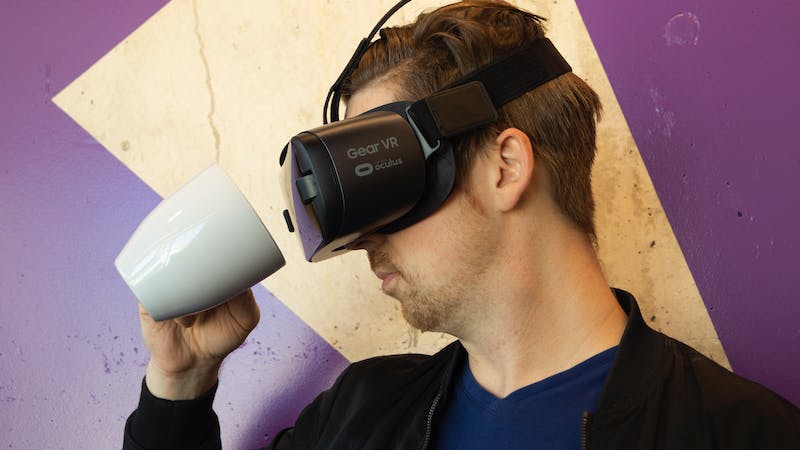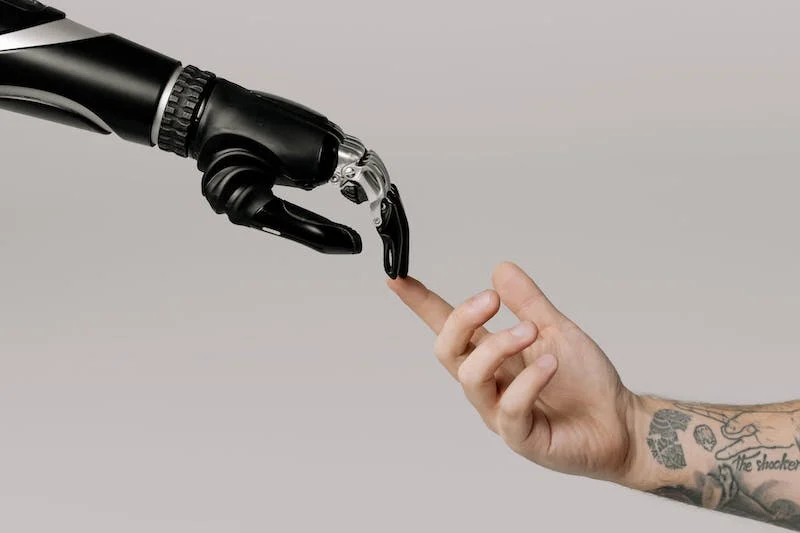Contents
- Introduction: The Human Body as a Data Interface
- Wearables and Earable Devices: A Shift Toward Ambient Intelligence
- The Rise of Earable Devices: Where Sound Meets Sensing
- AI Integration: The Brain Behind the Wearable
- Design Evolution: From Gadgets to Garments
- Productivity, AR, and the Spatial Computing Frontier
- Health, Privacy, and Data Ethics
- Energy Efficiency and Sustainability in Wearables
- Market Outlook: From Niche to Mainstream
- Challenges Ahead: Miniaturization, Accuracy, and Comfort
- The Human-Tech Future: Seamless, Sensing, Symbiotic
Introduction: The Human Body as a Data Interface
Wearable technology has long been at the forefront of personal tech innovation. But as the industry matures, a new class of devices—“earables”—is emerging to reshape how humans interact with data, health systems, and their environments.
According to a 2025 arXiv survey, earable devices—sensors placed in or around the ear—are among the fastest-growing subfields in wearable computing. These devices can measure biometric signals, monitor environmental conditions, and even detect neurological or cognitive changes through the unique access point of the ear canal.
At the same time, wearables overall are becoming smarter, more adaptive, and more seamlessly integrated into everyday life. They are combining AI-driven analytics, biometric sensing, and augmented reality interfaces to deliver real-time feedback on everything from stress levels to spatial awareness.
Wearables and Earable Devices: A Shift Toward Ambient Intelligence
In 2025, wearables are no longer just data collectors—they are context-aware companions. The integration of machine learning algorithms, adaptive feedback systems, and edge computing allows these devices to interpret complex signals and respond intelligently.
For example:
- Smartwatches now analyze blood oxygen, heart rate variability, and sleep quality in real-time, offering tailored recovery or training advice.
- Earable devices, such as those by Sony, Bose, and Google, are designed not just for listening but for biometric and environmental sensing.
- AI-driven wearables can detect patterns that suggest health deterioration before symptoms become visible, enabling early intervention.
A growing body of research—including the arXiv 2025 review on Earable Computing—highlights the potential of these systems in cognitive health monitoring, affective computing, and even adaptive soundscapes that enhance focus or relaxation.
The Rise of Earable Devices: Where Sound Meets Sensing
The Ear as a Gateway
The human ear is a powerful, underutilized sensor platform. Its proximity to the brain, vestibular system, and rich vascular network makes it ideal for physiological monitoring.
Earable devices leverage this location to collect high-fidelity data on:
- Heart rate and blood flow
- Brain activity (EEG signals)
- Body temperature
- Posture and movement
- Environmental soundscapes
This unique access point enables continuous, non-invasive monitoring—something that wrist- or chest-based sensors struggle to maintain with precision.
Health and Cognitive Applications
Startups and academic labs are already demonstrating how earables can transform healthcare and mental wellness:
- Neuromonitoring: Devices such as Neuralink’s behind-the-ear prototypes and Bragi’s AI-powered earphones can capture neural and muscular signals to assess fatigue or cognitive load.
- Hearing augmentation: Beyond simple amplification, new AI-enabled hearing aids dynamically filter environmental noise, optimize speech clarity, and even translate languages in real time.
- Cognitive feedback: Future “mindful earables” could deliver personalized audio cues to reduce anxiety or enhance focus, based on EEG and galvanic skin responses.
AI Integration: The Brain Behind the Wearable
AI is the invisible force accelerating wearable innovation. Machine learning models analyze raw sensor data and convert it into meaningful, actionable insights.
Modern wearables and earables employ:
- Edge AI for real-time processing directly on the device, reducing latency.
- Federated learning to train models collaboratively across millions of users while maintaining privacy.
- Predictive analytics to anticipate health or productivity changes.
For instance, Fitbit and Apple Health use deep learning to assess recovery readiness, while Oura Ring applies adaptive AI to predict illness onset. Earables are taking this further—combining contextual AI with biometric sensing to create “smart audio environments” that adjust sound based on mental state or task.
According to a World Economic Forum report, AI-driven wearables could reduce preventable health emergencies by up to 30% by 2030 through predictive monitoring.
Design Evolution: From Gadgets to Garments
The next generation of wearables will look—and feel—less like technology and more like clothing or jewelry. Companies are prioritizing comfort, fashion, and discretion alongside function.
Emerging innovations include:
- Smart textiles embedded with micro-sensors for posture correction or hydration monitoring.
- Bio-compatible polymers for skin-safe, flexible electronics.
- Energy-harvesting materials that convert body heat or motion into power, extending device battery life.
Earable devices are also evolving toward long-term wear. By 2027, analysts predict earables will move from consumer gadgets to continuous health interfaces, capable of 24/7 monitoring without user discomfort.
Productivity, AR, and the Spatial Computing Frontier
As augmented reality (AR) and spatial computing advance, wearables and earables are becoming key input and feedback devices for immersive environments.
AR/VR Integration
- Meta and Apple are integrating health and focus metrics from wearables directly into AR headsets, personalizing experiences based on stress or attention.
- Earables add a sensory dimension—delivering spatial audio cues, safety alerts, or even emotional feedback loops in metaverse environments.
Workplace Applications
In enterprise settings, wearables and earables are enhancing safety and productivity:
- Construction workers use smart helmets with earable sensors that monitor fatigue and noise exposure.
- Remote employees leverage AI-enabled earbuds that reduce background distractions while tracking vocal strain.
These integrations highlight a shift toward cognitive ergonomics—designing technology that supports human performance without increasing cognitive load.
Health, Privacy, and Data Ethics
As wearable and earable devices collect increasingly intimate data, trust and governance are becoming essential.
Organizations are investing in transparent data policies, end-to-end encryption, and on-device processing to maintain user privacy.
Regulatory Landscape
The U.S. FDA, European Data Protection Board, and ISO/IEEE 11073 standards are shaping how biometric data can be ethically managed and shared.
AI-enabled earables in healthcare must meet stringent medical-grade accuracy standards before clinical approval, especially for neurological monitoring or diagnostics.
User Trust and Transparency
A key industry trend is “Explainable AI in wearables”—offering users clear reasoning for feedback or alerts. This fosters digital trust and ensures ethical data use, echoing frameworks from organizations like IEEE’s Ethics in Action Initiative.
Energy Efficiency and Sustainability in Wearables
Another major trend driving wearable innovation is green tech—making devices more sustainable and power-efficient.
Advances in low-power chips, wireless charging, and biodegradable materials are addressing the energy and waste challenges of large-scale adoption.
Structural Batteries and Self-Powered Sensors
Researchers, inspired by findings shared by the World Economic Forum, are exploring structural battery composites—materials that store energy while serving as physical components.
In earables, this could mean earpieces that power themselves using body heat or motion, drastically reducing environmental impact.
Market Outlook: From Niche to Mainstream
The global wearables market is projected to exceed $180 billion by 2030, with earable devices accounting for a rapidly growing share.
A 2025 arXiv report identifies healthcare, entertainment, and workplace safety as the top three growth sectors.
Key market drivers include:
- Integration with AI ecosystems (Apple, Google, Samsung).
- Expansion of 5G/6G connectivity for real-time cloud interaction.
- Growth of personalized wellness and remote diagnostics.
- The rise of quantified self culture, where users track cognitive, emotional, and physical data seamlessly.
Meanwhile, companies are differentiating themselves through privacy-first designs and interoperable platforms, ensuring users can control their own biometric data.
Challenges Ahead: Miniaturization, Accuracy, and Comfort
Despite their promise, wearables and earables still face technical and ergonomic challenges:
- Miniaturization: Packing multiple sensors into compact, comfortable form factors without compromising performance.
- Signal accuracy: Reducing noise from movement and environment to improve data reliability.
- Battery life: Extending power without adding bulk or weight.
- User adoption: Ensuring long-term comfort, particularly for ear-based devices.
Ongoing research in nanomaterials, AI-assisted calibration, and context-aware algorithms is addressing these hurdles, gradually bringing the vision of invisible, always-on computing closer to reality.
The Human-Tech Future: Seamless, Sensing, Symbiotic
As wearables and earable devices evolve, they represent a deeper trend in technology’s trajectory: the merging of human and digital experience.
The future isn’t just about devices that we wear—but about environments that sense us, understand us, and adapt to us.
From predictive healthcare to adaptive AR experiences, these technologies are turning the human body into the interface of the future.
The ear, it turns out, may be the next great frontier of computing—quietly, comfortably, and intelligently connected to everything we do.
🔗 Internal Link
See related coverage: Energy and Compute Efficiency, Green Tech




